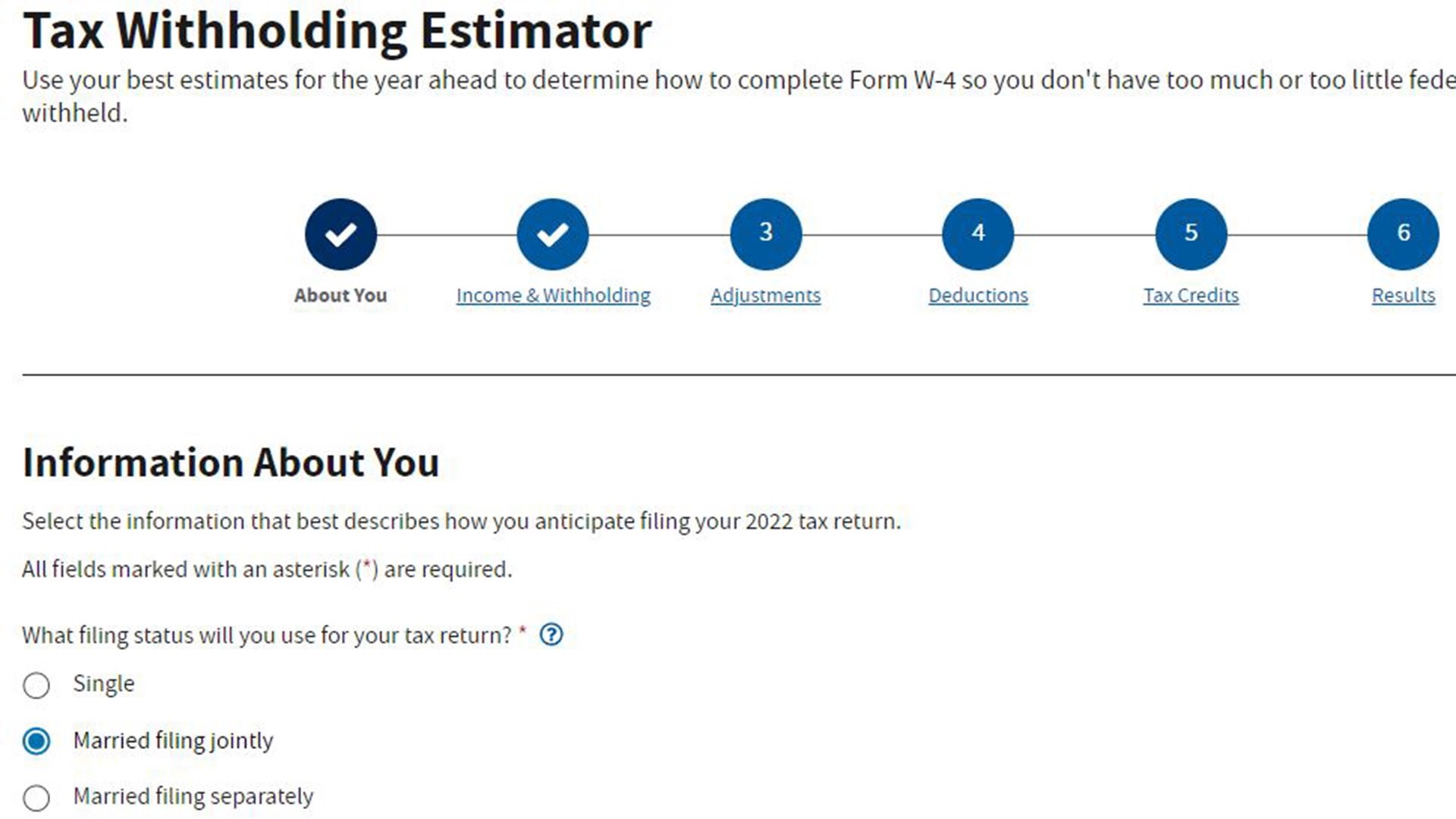The 2021 tax season is over for most Americans. With Monday's deadline to file those federal returns, tens of millions of people will find they are getting a big refund from Uncle Sam -- money the government has held onto for the past year.
But what if it didn't have to be that way? What if people could find a way to navigate the confusing tax code and keep more of their paycheck throughout the year?
The Internal Revenue Service has an online tool called the Tax Withholding Estimator to help do that. And even though we're already 3 1/2 months into the 2022 tax year, it's not too late to start using it.
"It allows you as a family to bring the taxes you pay closer to what you actually owe by estimating the amount of taxes you're going to owe throughout the year," said IRS spokesman Raphael Tulino. "That way, you can adjust it as the year goes and not be too far one way or the other when it comes to tax time."
In simple terms -- input the correct information, then adjust W-4 withholdings accordingly. The outcome should be something close to zero at tax time, possibly paying a small amount or getting a small refund.
The tool got an update about three years ago as more people entered the gig economy and other factors, causing adjustments to how that income had to be reported.
Tulino said the process takes about 20 minutes. The user will need all their necessary financial documents such as pay stubs for a reference. Many of the questions the estimator will ask are similar to what to expect when filing taxes including:
- Filing status, whether single or married
- If a dependent will be claimed
- Sources of income
- Pay stub information such as how much has been earned this year and how much has been paid in taxes
- 401k, HSA and FSA contributions
- Deductions and tax credits
It will not ask for personal information such as name, social security number, address or bank account numbers.
"What you put in there and what comes out is a ballpark estimate of what you're going to owe in taxes throughout the whole year," Tulino said.
The estimator can be used year-round, but Tulino said doing it earlier is better. Using it in the later months may not leave enough time to change withholdings so that the taxpayer gets close to zero.
The average refund this year is well over $3,000, Tulino said. Some Americans may want it that way, whether they plan to use that money for a specific purchase or just the peace of mind from knowing they won't be paying the IRS.
"But if you think about it, that's money that could be in your pocket throughout the whole year. You don't have to give the government that money to hold for you," Tulino said.
He added that even if taxpayers use the estimator and still end up having to pay a small amount to the IRS, it still means they had access to what would have been their money during the tax year rather than waiting for it.

